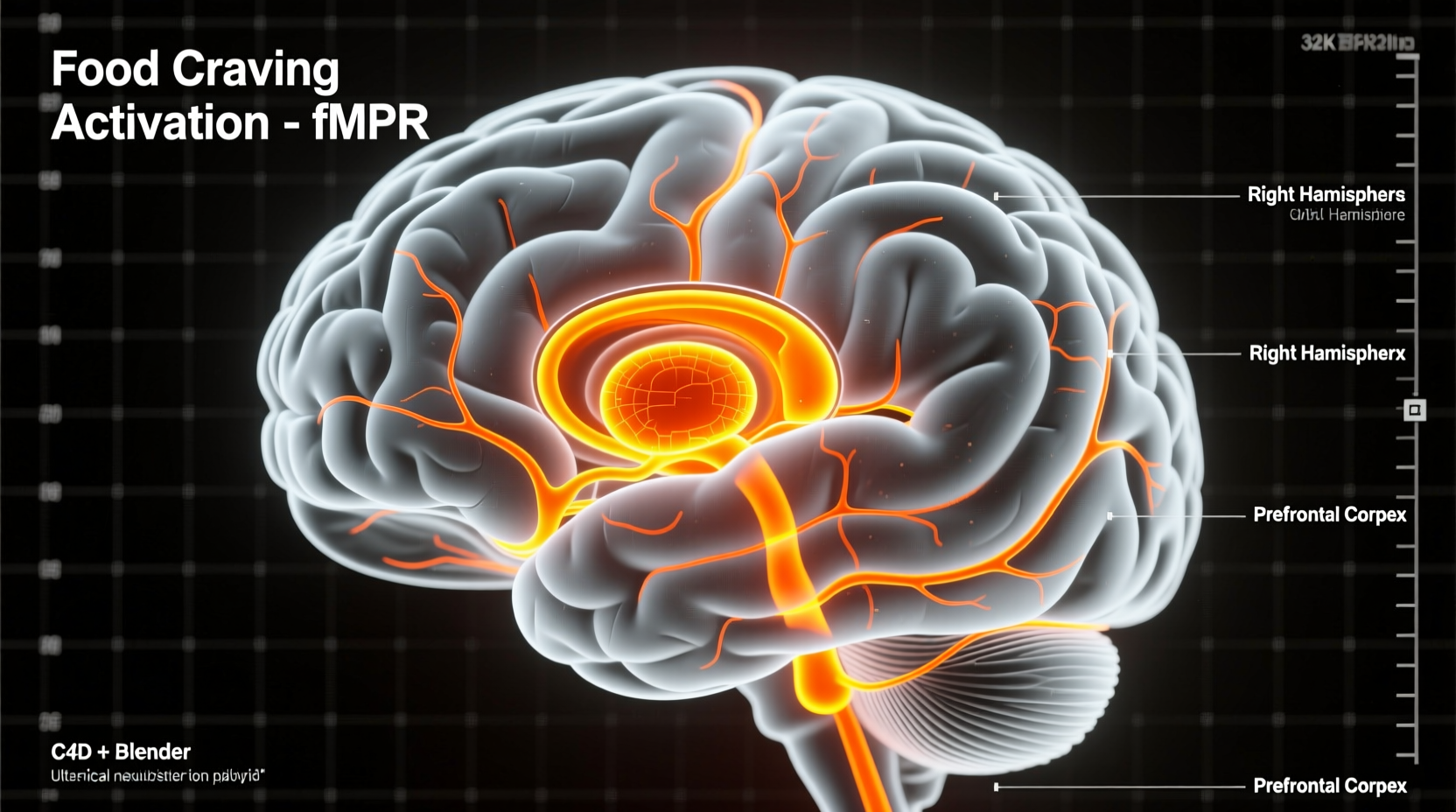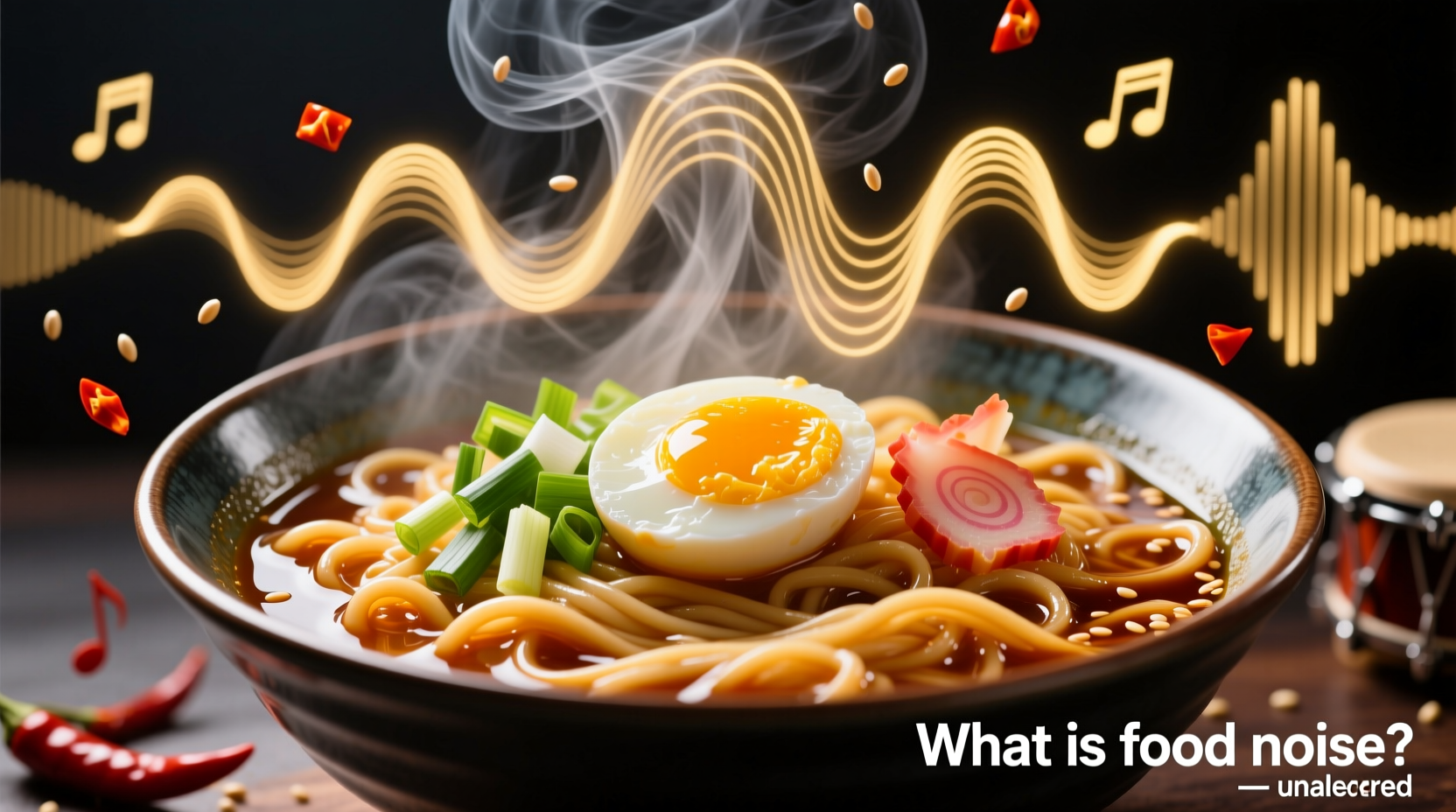Ever find yourself mentally scrolling through snack options when you're not actually hungry? That's food noise—a phenomenon increasingly recognized by nutrition scientists and psychologists as a significant factor in modern eating behaviors. Understanding this concept can transform how you relate to food, helping you distinguish between true hunger and mental chatter that drives unnecessary eating.
The Science Behind Food Noise: More Than Just Cravings
Food noise isn't simply 'having food on your mind'—it's a specific neurological pattern where food-related thoughts become persistent and intrusive. Research from the National Center for Complementary and Integrative Health shows these thoughts activate the same brain regions involved in addiction pathways, particularly the prefrontal cortex and reward system.
Unlike physical hunger—which builds gradually and can be satisfied by various foods—food noise typically involves:
- Specific cravings for particular foods (especially ultra-processed items)
- Mental preoccupation that persists after eating
- Emotional triggers rather than physiological need
- Increased frequency in environments with constant food marketing
| Characteristic | Food Noise | Physical Hunger |
|---|---|---|
| Onset | Sudden, triggered by cues | Gradual, builds over time |
| Physical Sensation | Rarely includes stomach signals | Stomach growling, low energy |
| Satisfaction | Requires specific foods | Any nutritious meal satisfies |
| Mental State | Urgent, obsessive thoughts | General awareness of need |
How Food Noise Evolved: A Timeline of Modern Eating Challenges
Understanding food noise requires examining how our relationship with food has changed over time. Historically, food thoughts served an evolutionary purpose—but modern environments have hijacked this system:
- Pre-20th Century: Food thoughts primarily signaled genuine physiological need, with limited food availability creating natural eating boundaries
- Mid-20th Century: Processed foods emerged, designed to trigger dopamine responses without nutritional satiety
- 1980s-2000s: Constant food advertising and 24/7 food access normalized eating outside hunger cues
- Present Day: Ultra-processed foods, social media food content, and stress create perfect conditions for persistent food noise

When Food Noise Crosses the Line: Contextual Boundaries
Not all food thoughts constitute problematic food noise. The American Psychological Association identifies key distinctions between normal food awareness and concerning food noise:
- Normal: Thinking about dinner while cooking, occasional cravings that pass quickly
- Moderate: Regular cravings for specific foods, especially during stress, but able to redirect attention
- Problematic: Intrusive thoughts interfering with daily activities, eating when physically full, or feeling mental exhaustion from constant food decisions
Food noise becomes clinically significant when it meets criteria outlined in the Journal of Eating Disorders (2023): occurring daily for three weeks, causing distress, and leading to eating patterns disconnected from hunger cues.
Proven Strategies to Reduce Food Noise
Research from Harvard T.H. Chan School of Public Health shows food noise can be managed through evidence-based approaches that address both neurological and behavioral components:
1. Protein-Focused Breakfast Protocol
A 2022 study in Nutrients found participants who consumed 30g of protein within 90 minutes of waking experienced 27% less food noise throughout the day compared to carbohydrate-heavy breakfasts. The mechanism involves stabilized blood sugar and increased peptide YY, a hormone that reduces appetite signaling.
2. The 15-Minute Rule for Cravings
When food noise strikes, implement a structured pause:
- Identify the trigger (stress, boredom, visual cue)
- Drink 8oz of water
- Engage in non-food activity (walk, puzzle, conversation)
- Reassess after 15 minutes
This technique, validated by researchers at Stanford Medicine, leverages the fact that most food noise peaks and subsides within 10-15 minutes when not acted upon.
3. Environmental Modification System
According to the Harvard T.H. Chan School of Public Health, modifying your environment reduces food noise more effectively than willpower alone. Implement these changes:
- Remove visible ultra-processed foods from countertops
- Install website blockers for food delivery apps during non-meal hours
- Create 'food noise zones'—designate areas where food discussion/imagery isn't allowed (bedroom, workspace)
- Replace passive scrolling with audio content that doesn't trigger food thoughts
When to Seek Professional Support
While occasional food noise is normal, persistent patterns may indicate underlying issues requiring professional guidance. Consult a registered dietitian or therapist if you experience:
- Daily food preoccupation lasting more than 2 hours
- Eating despite physical discomfort
- Using food to manage emotions more than 3 times weekly
- Negative impacts on work, relationships, or mental health
The Academy of Nutrition and Dietetics recommends seeking specialists certified in disordered eating when food noise significantly impacts quality of life. Early intervention improves outcomes, with 78% of clients reporting reduced food noise within 8-12 weeks of targeted therapy.
Frequently Asked Questions
Is food noise the same as emotional eating?
Food noise often precedes emotional eating. While emotional eating refers to the behavior of consuming food to manage feelings, food noise describes the persistent mental chatter about food that drives that behavior. You can experience food noise without emotional eating, but emotional eating typically involves food noise as a precursor.
Can certain diets increase food noise?
Yes, highly restrictive diets often amplify food noise through the 'forbidden fruit' effect. Research shows that eliminating entire food groups increases obsessive thoughts about those foods by 40-60%. Balanced approaches that include moderate portions of desired foods typically reduce food noise more effectively than elimination diets.
How long does it take to reduce food noise?
Most people notice improvement within 2-3 weeks of implementing evidence-based strategies. Significant reduction typically occurs between 4-8 weeks as new neural pathways form. Consistency matters more than perfection—studies show that maintaining new habits 70% of the time creates meaningful change in food noise patterns.
Is food noise related to ADHD?
Emerging research indicates a connection. People with ADHD often experience heightened food noise due to dopamine regulation differences. A 2023 study in the Journal of Attention Disorders found 68% of adults with ADHD reported problematic food noise compared to 32% in the general population. Targeted strategies addressing executive function can help manage this specific manifestation.
Can intermittent fasting reduce food noise?
Results vary significantly by individual. For some, structured eating windows reduce decision fatigue that contributes to food noise. However, for others—particularly those with history of dieting—intermittent fasting can amplify food noise through deprivation effects. A personalized approach guided by a healthcare professional yields better outcomes than generic protocols.











 浙公网安备
33010002000092号
浙公网安备
33010002000092号 浙B2-20120091-4
浙B2-20120091-4